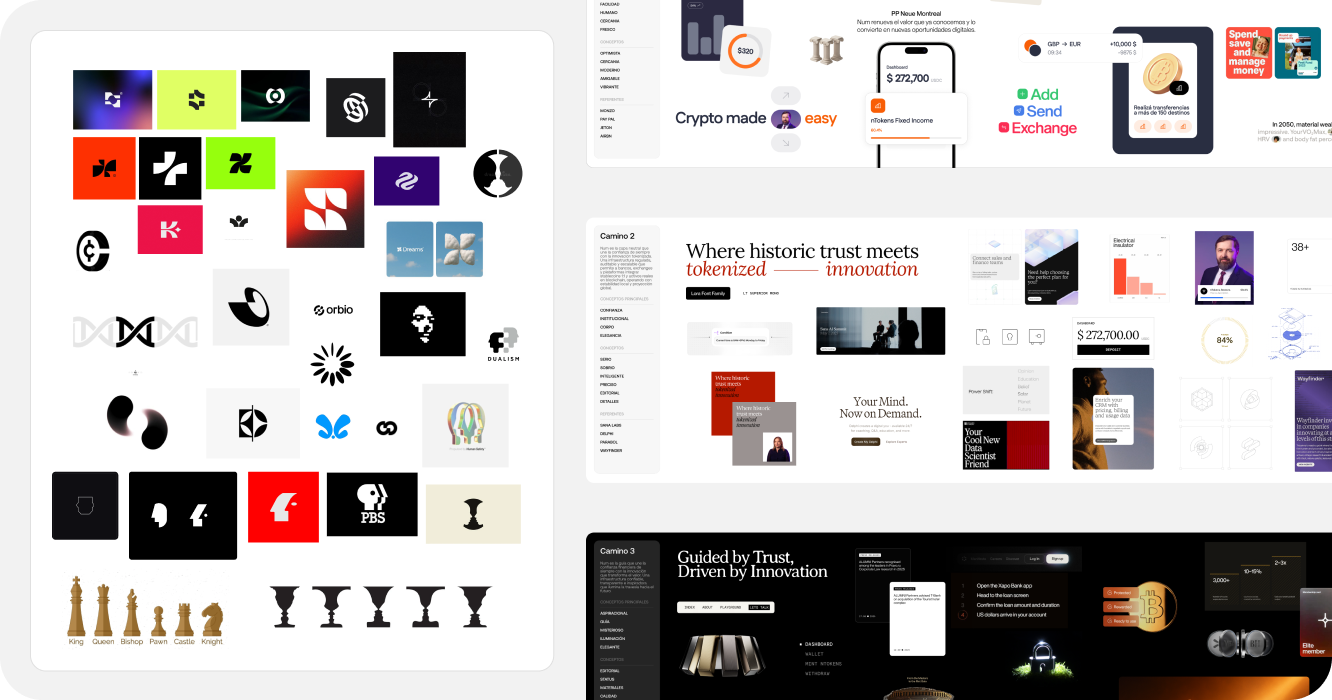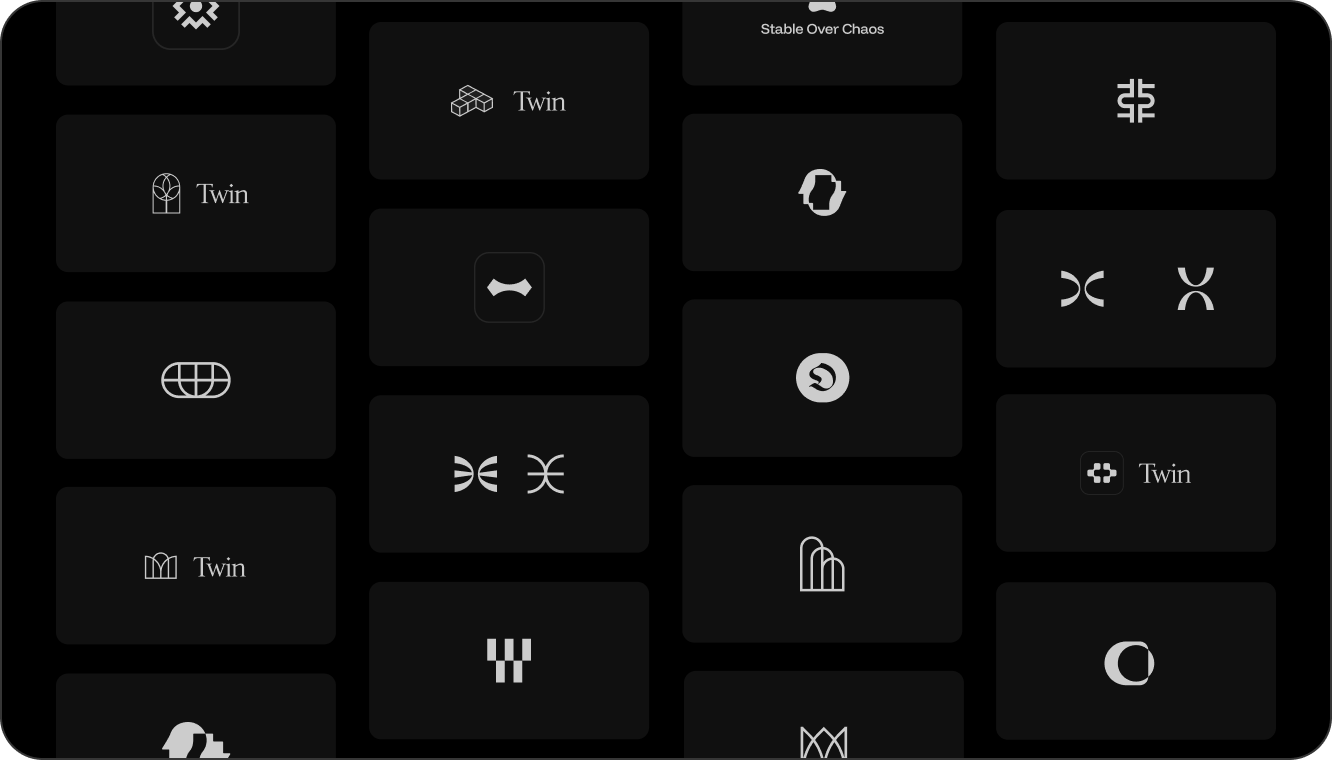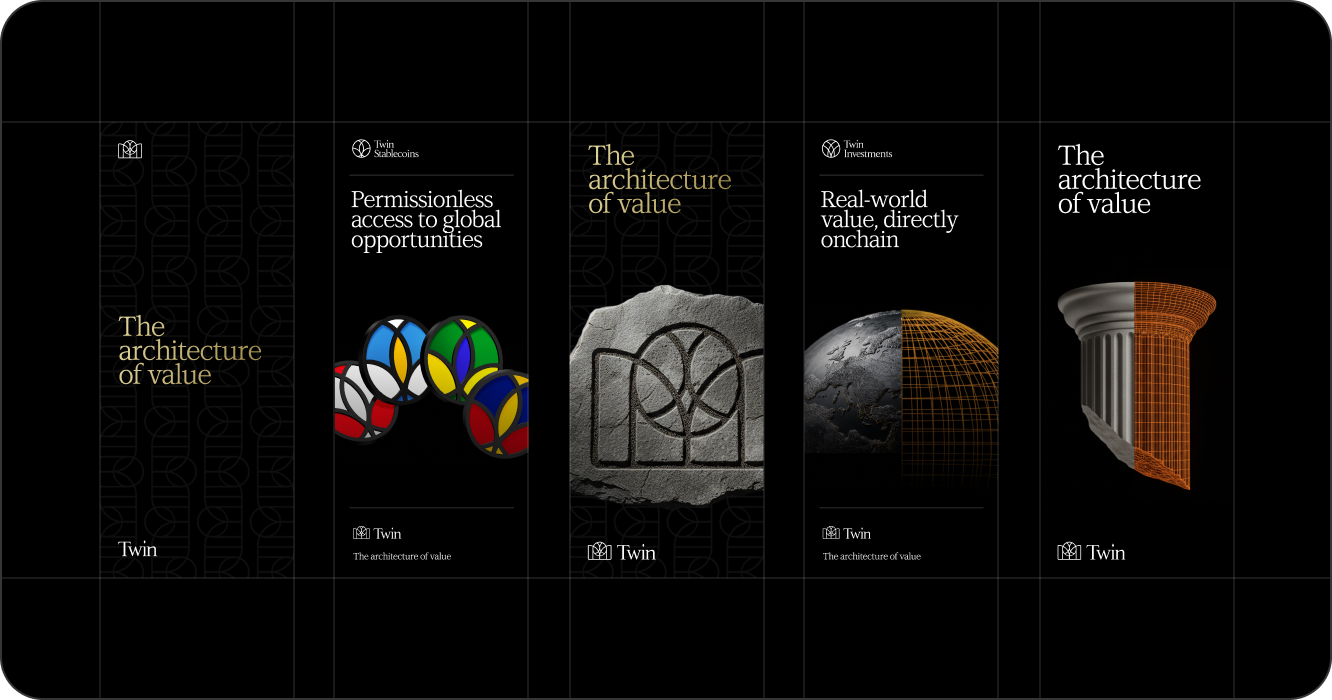When design gets its soul back
In a world where everything tends to be simplified, design can also be a way of storytelling. This is the story behind the Twin project, and also an opportunity to share our process: how we did it, and how the same approach can be applied to other creative journeys. What began as a simple logo request turned into a deep creative process to build a brand made to last.
The Beginning: From a Logo to a Story
The Twin project started with a simple sentence: “We need a logo.”
But we all knew it was never going to be just that. Behind the request was something much bigger, the need to build a brand with purpose, an identity capable of telling a story.
The world of web3, crypto, and blockchain can seem intimidating at first, even for designers. But, as with every project, it was an opportunity to learn, to understand its codes, language, and nuances. From the start, the challenge was clear: How do you translate something so technical and seemingly complex into something human, approachable, and easy to understand?
The brand had to speak two languages at once: the institutional world (grounded in trust, regulation, and security) and the digital ecosystem (flexible, innovative, and ever-evolving).
Twin had to have two faces. It had to be the bridge, moving naturally between both worlds.

The Carving: The Creative Process
Whenever I begin a new identity process, my first impulse is always to search, to understand before designing.
As usual, I started by diving into Mobbin, Awwwards, Pinterest, benchmark studio projects, and even Instagram and X, each with its own lens depending on what was needed. I can spend hours in that exploratory phase: images, logos, typefaces, materials, colors, architecture, art movements, anything that can help build a universe is useful.
That search is rarely linear or tidy. Every piece found opens another door. And at some point, when the algorithm starts showing the same things over and over, I know it’s time to stop, organize ideas, and start creating.
In the middle of that exploration, one idea began to emerge: classical architecture, columns, domes, and structures that have conveyed trust, stability, and permanence for centuries.
From there, everything started to connect: chess as a metaphor a game of strategy rather than chance, where every piece has a role and every move counts, but it’s the board that makes it all possible. Twin wasn’t going to be the piece, it was going to be the board.
That board took us even further back, to the Renaissance and Florence, a time when the world stopped revolving around God and placed the human being at the center. Symmetry, proportion, and detail became ways of understanding reality.
That’s when we knew Twin needed a Renaissance soul: a brand that reclaims the classical to speak about the future. Because, as El Eternauta once said and as Santi Echazú, Paisanos’ CCO, reminded us at the Twin launch “Old things work”. And yes, in a world obsessed with simplification, going back to tradition can be an act of rebellion.

The Craft: Giving Form to the Idea
From the first meetings, we realized something key: we had to design a brand that felt almost like a bank. Not in its aesthetics, but in its level of solidity, trust, and institutional presence. At the same time, it had to live comfortably in digital environments, versatile, adaptive, alive. Two sides. One coin.
The logo couldn’t be just simple, it had to be structured, communicating both stability and duality, while leaving room for expansion into sub-brands and system variations.
The goal was to condense everything conceptual and narrative into a single symbol. Its composition had to be made of instantly recognizable visual elements. That’s how the twin side shapes appeared, along with the central semicircular arch, a direct nod to Renaissance architecture. Finally, the circular “coin” emerged, a core element that allowed us to create a scalable system with custom marks for each Twin vertical.
Every part had meaning. Even the coin in the main logo wasn’t random, it followed the proportions of Vitruvian Man, abstracted to create harmony and balance.
Typography took time. It needed to project confidence and elegance while remaining flexible across uses. We finally landed on the perfect pairing: a typeface with institutional character for headlines, bold and impactful, and a cleaner, modern one for running text and subheads.
Then came color. The client had been clear: “No navy blue”. But blue was destined to be there, ultramarine blue, the color of the Virgin’s mantle and of lapis lazuli, once more valuable than gold during the Renaissance. A blue with history, depth, and symbolism.
Beside it, a vibrant rebirth orange, energetic and modern, a chromatic duality reflecting the tension between tradition and innovation. The rest of the palette (whites, blacks, grays, and gold) added a sober, institutional tone.
In the illustrations, we found a visual resource that tied it all together: duality within a single image objects split between tangible realism and digital 3D mesh textures.
To achieve it, we combined tools like Midjourney and Nano Banana, creating both versions of each object and merging them into one seamless composition. That blend allowed us to maintain coherence and detail across every application, whether it was a coin, a planet, a chess piece, or a key.
A visual universe telling the story of two worlds coexisting as one.

The Museum: When Design Starts to Live
Twin was a project built with love, with obsession for detail and a genuine desire to tell a story. From day one, there was a narrative waiting to be told, and our job was simply to let it come to life.
Collaboration with the Twin team was essential. It always felt like one united crew building something together. Each meeting was a chance to add, debate, question, refine, overflow with ideas, and fly a little higher. And for a designer, there’s nothing better than hearing a client say: “We have no more comments, this is it”. That line marked the end of a process that, in truth, didn’t really end there.
Because once a brand begins to live, it no longer fully belongs to you. It starts to evolve, to grow, to appear in unexpected places. And that’s what I love most about design, knowing that, somehow, you leave a mark.

Made to Transcend
What began as a logo request became a story, one about design, time, trust, and transcendence. About how, sometimes, the best brands are those that dare to look back to move forward.
Twin reminded us that design isn’t just about simplifying or solving visual problems, it’s about telling better stories. Stories that connect people, ideas, and futures. Twin was exactly that: a story that told itself, but was designed with soul.
Because in the end, design is still about one thing, giving shape to an idea so that someone can feel it.

Want to see how we brought it to life? Explore the full Twin case study here.
















